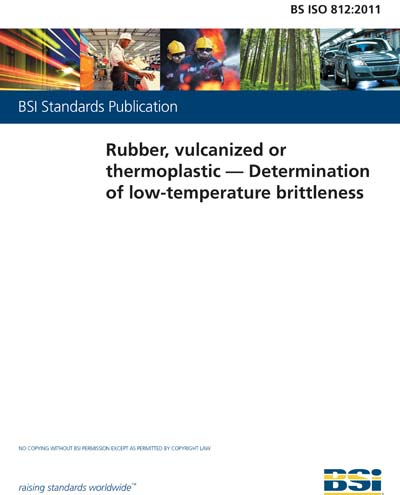Historical
BS ISO 812:2011
Rubber, vulcanized or thermoplastic. Determination of low-temperature brittleness (British Standard)
ISO 812:2011 specifies a method for determining the lowest temperature at which rubber materials do not exhibit brittle failure or the temperature at which half of the test pieces used in a test fail when impacted under specified conditions.
The temperatures thus determined do not necessarily relate to the lowest temperature at which the material can be used since the brittleness will be affected by the conditions of test and especially by the rate of impact. Data obtained by this method should, therefore, be used to predict the behaviour of rubbers at low temperatures only in applications in which the conditions of deformation are similar to those specified in the test.
Three procedures are described:
- procedure A, in which the brittleness temperature is determined;
- procedure B, in which the brittleness temperature for 50 % failure is determined;
- procedure C, in which the test piece is impacted at a specified temperature.
Procedure C is used in the classification of rubber materials and for specification purposes.
British Standards Institution [bsi]

